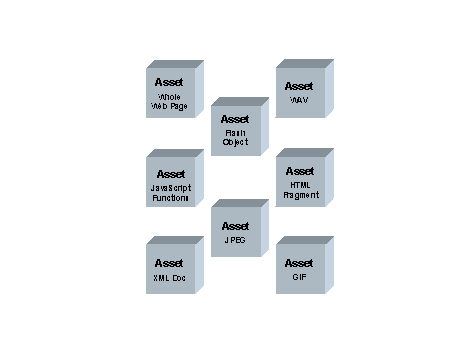CAM: Content Model
The SCORM Content Model is made up of the following components:
Assets
|
Basic blocks of learning content, which are electronic representations of media, text, images, sound, web pages etc. | |
|
Can be described with Asset Meta-data to allow for search and discovery within
online repositories, thereby enhancing opportunities for reuse. |

Sharable Content Objects (SCO)
|
Represents a collection of one or more Assets that include a specific launchable asset that utilizes the SCORM Run-Time Environment to communicate with Learning Management Systems (LMSs). | |
|
Represents the lowest level of granularity of learning resources that can be tracked by an LMS using the SCORM Run-Time Environment. | |
|
A SCO can be described with SCO Meta-data to allow for search and discovery within online repositories, thereby enhancing opportunities for reuse. | |
|
A SCO is free from context information. |
Content Aggregations
|
A Content Aggregation is a map (content structure) that can be used to aggregate learning resources into a cohesive unit of instruction (e.g. course, chapter, module, etc.) | |
|
The Content Aggregation defines the content structure that provides the mechanisms for defining the sequence that learning resources are to be presented to the user. | |
|
The LMS is responsible for interpreting the intended sequence described in the content structure and controlling the actual sequencing of the learning resources at run-time. |